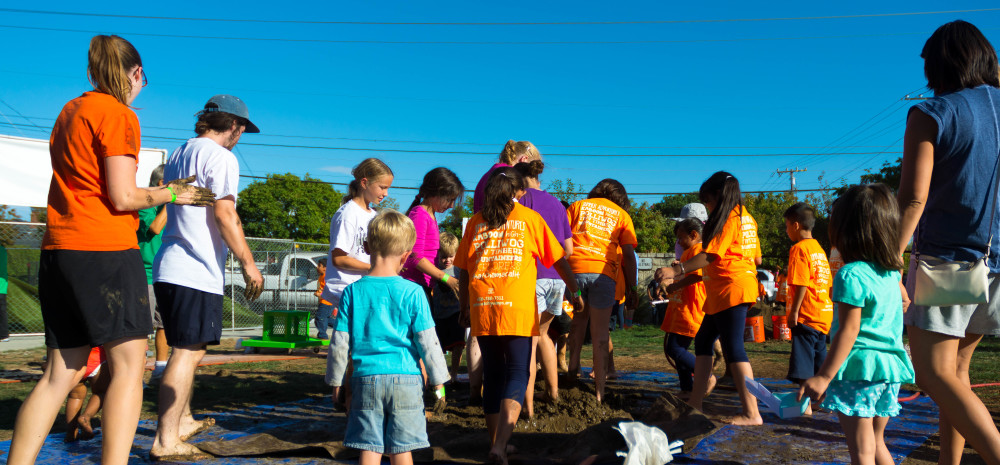I graduated from The Maryland Institute College of Art in 2012 and fell into building a DIY skate park with my friends. We tore down parts of an abandoned bell foundry in Downtown Baltimore to transform it into undulating concrete forms. Skaters, bikers, rollerbladers, and artists from diverse parts of the community came to help build. The goal of the park was to respond to the desires of the community, for anyone to be able to enjoy the finished product. It remains a multi-purpose space for people from all over Baltimore to engage with each other in new ways.
This project was a crucial shift away from my academic practice, where I worked primarily on the production of discrete sculptures. Â It focused my vision outside of the gallery, to making public art that relates to the specificity of a community. It has also led to my current exploration of the concept Harambee.
Two years later in Washington DC I was selected by Fung Collaboratives to participate in the public art exhibition, Nonuments. Â In the city of a thousand monuments I made sculptures about the commonality of people rather than an exemplary few. The location of the sculpture was in Southwest DC between public housing and new high-rise apartments. Using cob (a grainy mixture of clay, straw and sand), the oldest building matter known to man, I demonstrated how a material culture can last as long, or longer, than a stone facade through the organization of communal work.
On August 26th, 2014 I organized “The Mud Dance†where people from various communities danced and stomped in the cob in order to mix it.  Everyone helped in their own ways to complete the sculptures, regardless of age, ethnicity, or socioeconomic standing. We provided food, games, and toys for the children. We challenged the stone structures that legitimize power with a public dance party, demonstrating that there were other methods and reasons to labor outside of a paycheck. The resulting sculptures were the solidifications of our collective effort.
It was at this time that I met a man from Kenya at the Southwest Community Garden where I was volunteering throughout the duration of Nonuments.  We talked about my project and he informed me that I am not having a dance party, but a harambee, a combination of a festival and construction site. It’s a Swahili word, translating to “all pull together†in English. For example, if a road in Kenya needs to be built, everyone joins together to complete the job. All are rewarded at the end of the day: the children with candies and prizes, and the adults with a little rum. This sounded like a much more human and integrated way to get public projects done, rather than how The District Department of Transportation implements their strategies .
The philosophically contentious aspect of this concept is that no authority instructs people to do this work. They decide for themselves, and organize themselves. In western philosophy this translates to anarchism. The chasm that exists between the different cultural understandings of labor cannot be resolved through language, but through demonstration. Â As an American, I am looking to Kenya to see how they approach the issue of communal work.
There are three parks in Redwood City where I can develop this project: Mezes, Andrew Spinas, and Mariners. Each of these places has their own landscape and identity, which will inform the sculptures and their eventual use. Each construction will be unique to the site. The intersection between disparate areas is what I want to embrace through the organization of collective work. Mariners Park, on the Bay Trail, is especially exciting as there’s an opportunity to access the greater Bay Area population
The goal of this Harambee is to not recreate or to take ownership of another culture’s mode of community, but to explore the possibility of a hybrid and/or fusion version of community. So often public sculpture is understood as large, anonymous, stainless steel objects. The shift in expectations from metal to cob is the shift away from the industrial implementation of art and a move towards the palpability of human involvement in the public sphere. I see the potential for public sculpture to be interactive, dynamic and relevant as an art form. Something that speaks with the community and not at it. The public’s engagement with materials is how we engage with each other, and how we create sculpture is the framework for its meaning. Harambee is the exploration of what city life could be using sculpture as a mode of agency.
